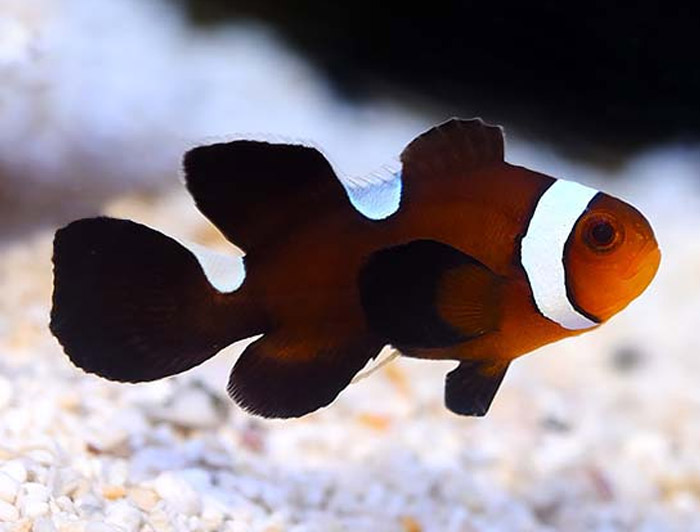Black Longfin Misbar Clownfish
Black Longfin Misbar Clownfish (Amphiprion ocellaris)
The Captive-Bred Misbar Black Longfin Clownfish is a remarkable designer clownfish, the result of several generations of meticulous selective breeding. As suggested by its name, this striking Black and White Ocellaris Clownfish features both misbar and longfin traits, giving it a unique appearance with incomplete bars and flowing long fins. Juvenile Captive-Bred Misbar Black Longfin Clownfish initially display a more orange-brown coloration, reminiscent of freshly brewed sun tea or coffee, which deepens to a jet black as they mature. The face and mouth are typically the last areas to turn black, usually when the fish reaches about 2 inches in length.
For optimal care, the Captive-Bred Misbar Black Longfin Clownfish should be housed in an aquarium of at least 20 gallons with ample live rock. It may form a symbiotic relationship with various anemone species, such as Carpet (Stichodactyla sp.), Sebae (Heteractis crispa), Bulb (Entacmaea quadricolor), or Ritteri (Heteractis magnifica) Anemones. While an anemone is not required for the clownfish to thrive, if one is included, ensure that your aquarium and lighting system can meet the anemone’s needs.
Captive-Bred Clownfish, like the Captive-Bred Misbar Black Longfin, offer several advantages over wild-harvested species. They are hardier and better adapted to home aquarium conditions, making them an excellent choice for both novice and experienced aquarists. When introduced at the same time, they can be kept with other captive-bred clownfish.
The Captive-Bred Misbar Black Longfin Clownfish can also be bred in a home aquarium relatively easily, making it a popular choice for saltwater breeders. The female will be larger, and the pair generally stays close together in the tank.
As an egg layer, the Captive-Bred Misbar Black Longfin Clownfish will lay eggs on a flat surface or near the base of the host anemone, defending them from tank mates. The eggs typically hatch in 6-11 days, depending on temperature. The fry should be reared in a separate tank and fed a diet of rotifers, eventually transitioning to baby brine shrimp.
This clownfish is an omnivore, requiring a diet that includes both meaty foods and some greens. A high-quality marine flake food rich in spirulina, along with freeze-dried and frozen foods, is readily accepted.
